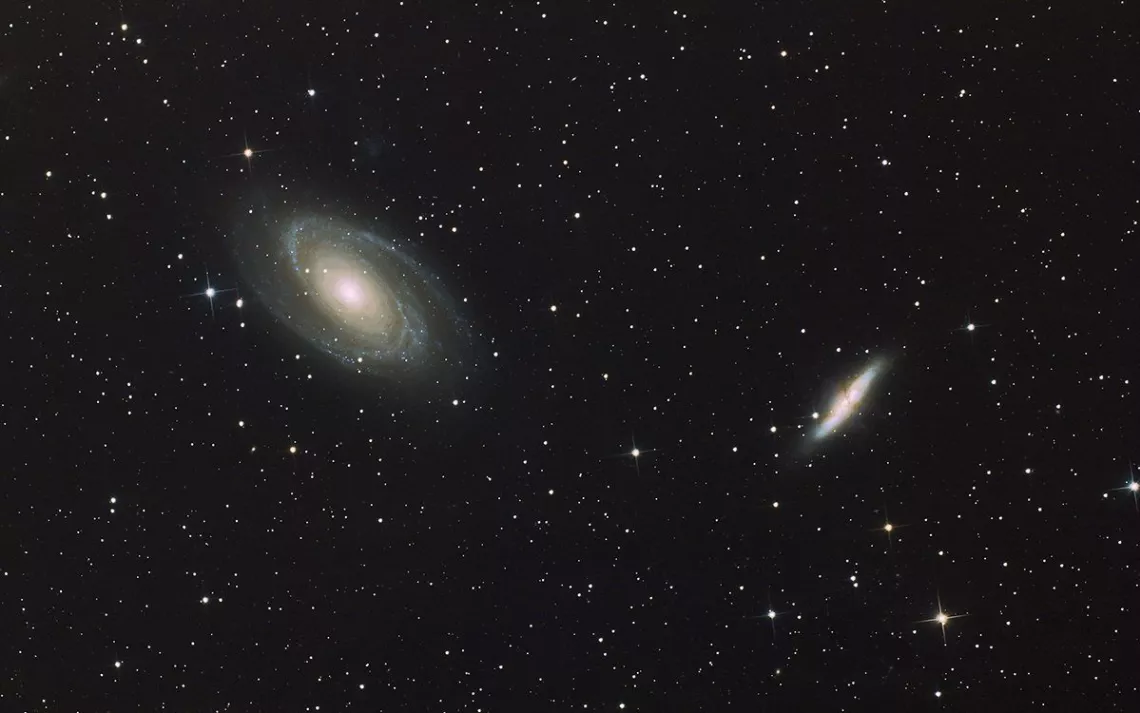May Astronomical Highlight: A Gala of Galaxies
Spring is the time for deep space to shine

Galaxies M81 and M82 near the Big Dipper | Photo by AudriusB/iStock
In April, astronomers made headlines with the news that they had, for the first time ever, captured an image of a black hole. Several billion times more massive than the sun, the black hole is situated deep in the heart of galaxy M87, which is about 55 million light-years from Earth. It took an extraordinary effort involving eight radio observatories on six mountains and four continents to gather enough data to create the image.
While black holes are obviously beyond the reach of most astronomers, those with access to a decent telescope can catch sight of M87 this month. Spring is the best time to observe galaxies, because the band of stars and dust of our own galaxy, the Milky Way, lies along the rim of the horizon, allowing us to peer up and out into deeper regions of space.
The Virgo Cluster
At magnitude 8.6, M87 is a supergiant elliptical galaxy, sometimes known as Virgo A. It is the largest member of the Virgo Cluster, which includes some 1,300 galaxies. The brightest galaxy in the Virgo Cluster is M49, at magnitude 8.5.
The Virgo Cluster with its giant mass and gravity not only attracts members of its own group but also pulls at our local group of galaxies, which includes the Milky Way. How do we know this? Some of the galaxies in the Virgo Cluster show blueshifts, indicating they are speeding closer to us, unlike almost every other object in the universe.
Not unsurprisingly, the constellation Virgo is home to the Virgo Cluster. Face south and look below the Coma Star Cluster (a large 1.8-magnitude spattering of stars) and off the tail of Leo the Lion. The best time to explore this region is later in the month, when the moon is out of the way.
Galaxies M81 and M82
For a somewhat easier galaxy to spot, try Bode’s Galaxy, M81, off the bowl of the Big Dipper in the direction of Cassiopeia. At magnitude 6.9, it’s substantially easier to catch through small telescopes, and once you achieve that, you can try for its near neighbor, the Cigar Galaxy, M82, less than half a degree away. If you spot the first one, you can usually always pick up the second, even though it’s only magnitude 8.4.
Three Red Beacons
Mars is the first planetary-viewing target in May, already out as soon as the sky gets dark. The red planet moves from Taurus to Gemini over the course of the month. Two other red-colored objects in the sky lie nearby—Aldebaran (the brightest star in Taurus) and Betelgeuse in Orion.
In the beginning of May, you can easily tell these three reddish objects apart with the help of the moon. On May 6, soon after sunset, a crescent moon keeps close quarters with Aldebaran. The next night, May 7, the crescent moon jumps up next to Mars. Betelgeuse does not get a visit from the moon, but it shines more brightly than either of the other two objects, making it the easiest to pick out when the moon is not present. This red-hued trifecta will get too close to the sun and the horizon by the end of the month and fade from view.
Jupiter and the Full Moon
Jupiter rises close to midnight at the beginning of May and a couple hours earlier by the end of the month. On May 19 and 20, it sits near a just-past-full moon. The official full moon is at 2:11 P.M. PDT on May 18. It won’t rise above the horizon for several hours but will still be 99.9 percent lit when it does.
 The Magazine of The Sierra Club
The Magazine of The Sierra Club



